Tanzania Holiday 12: "mobile camp" for the Serengeti walking safari
 Sunday, July 7, 2013 at 6:00
Sunday, July 7, 2013 at 6:00 We've just posted photos from our first day of walking safari: the morning walk and afternoon walk.
Before posting photos from the second day, it makes sense to explain more about the walking safari and camp.
Where was it located?
The campsite was located about here (see below) in Serengeti National Park, along the Orangi River:
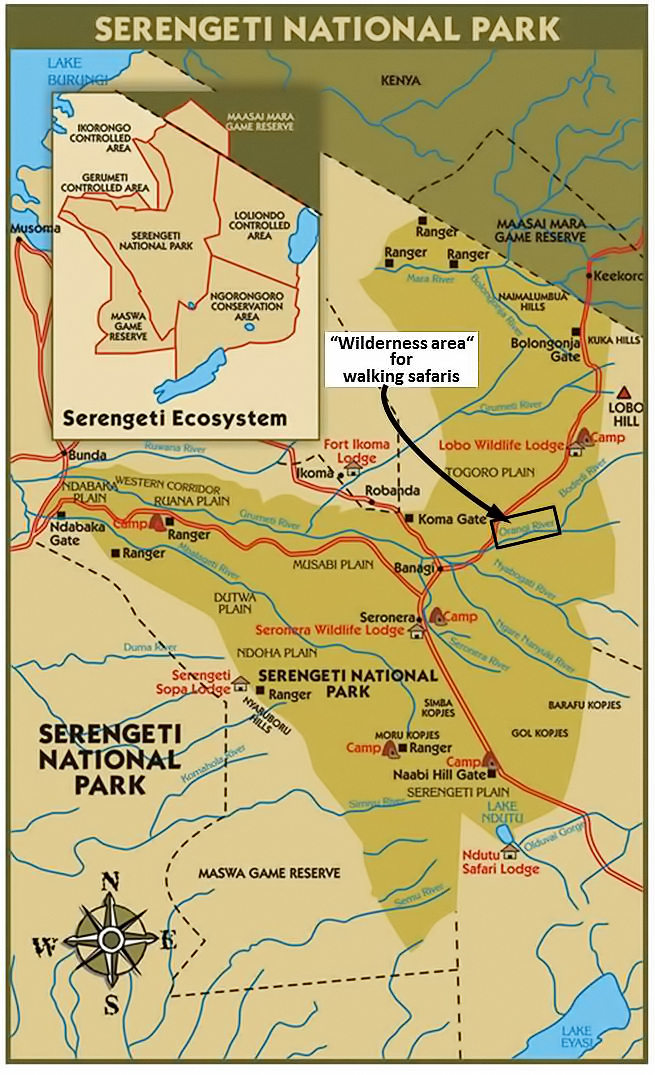 Source: tanzaniawildlifesafaris.com
Source: tanzaniawildlifesafaris.com
I think they change sites depending on time of year, e.g., a different place during the wildebeest migration.
How did you get to walk, rather than have to use jeeps?
Wayo Africa, our local guide company, describes the "wilderness zone" on this page, saying:
"Walking in the Serengeti is new to Tanzanian National Parks. Only a handful of companies have been granted permission to enter this park on foot. The regulations stipulate that an armed and qualified walking guide from the operating company must accompany all walks. An armed ranger from the National Park will also join every walk.
All walking activities in Tanzanian National Parks happen inside the demarcated "wilderness zones". The area we walk in is a massive and remote area and mainly consists of gentle rolling hills with small streams and springs in the valleys and small grassland plains surrounded by sparse acacia forests. Big granite outcrops called kopjes give the area a great feel and look and make for superb campsites.
"Wilderness zone" means an area with very limited human infrastructure or disturbances and access in to these zones generally only happens on foot or horse. Since a horse won't live long in the Serengeti we avoid these! The only roads that exist into these areas are access roads to the campsites. Since there are no permanent accommodation facilities in the walking zones a small, lightweight camp, we have to bring all our food and basic necessities into the camps.
Being an area of varied eco-zones and vegetation types it is home to all of Africa's mammals and a huge variety of birds, reptiles and insects. A fair amount of wildlife is resident in the area year round due to permanent springs but June - August is fantastic due to the annual migration moving through the area.
Since visibility is generally good walking is safe and wildlife watching good. "Walking wildlife watching," means looking at animals from a distance. Animals are nervous with people on foot and close up viewing is not possible and not advisable on a walk."
For reference, the "main" roads throughout Serengeti National Park looked like this...
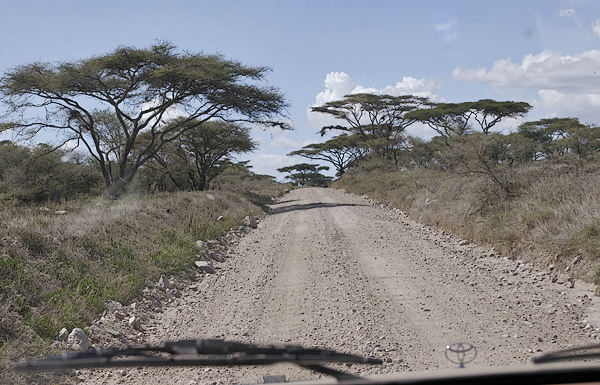
... but the drive to the camp in the wilderness area had, at best, tire tracks like this:
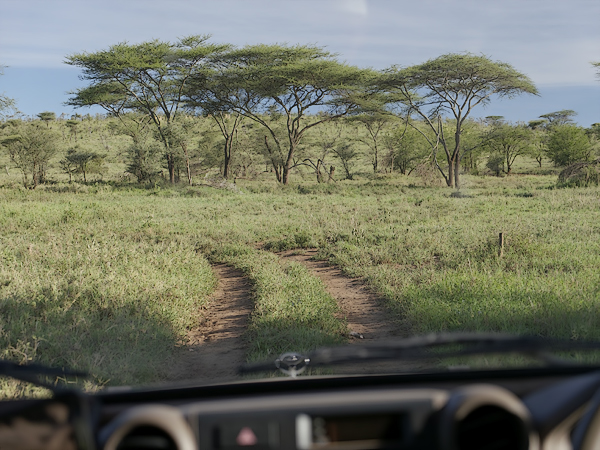
What was the landscape like?
The Orangi River is the defining natural element in this specific area, but with eco-diversity. The riverbed:
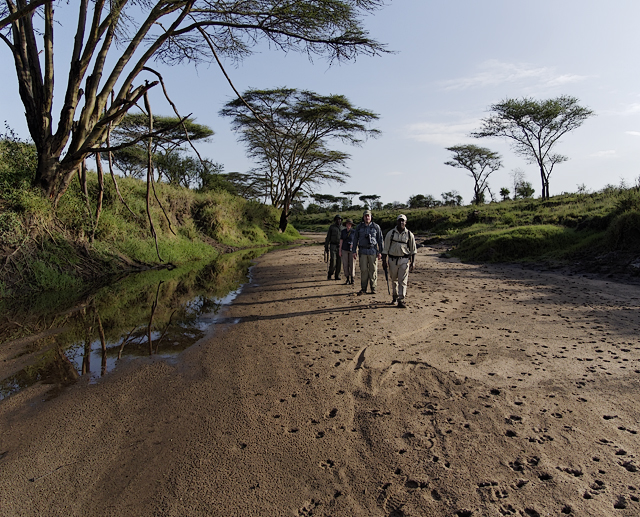
...often with pools of standing water and recent animal tracks:
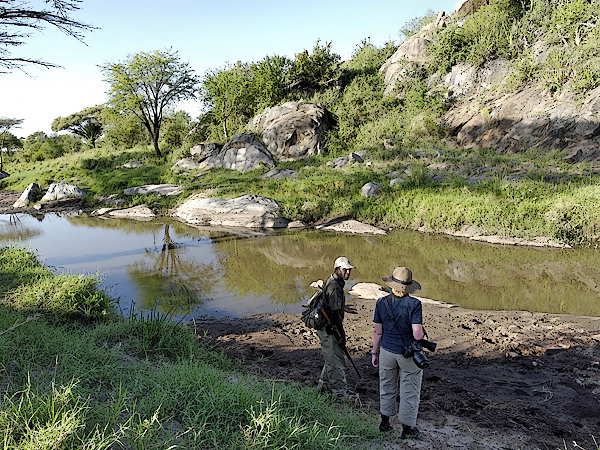
...riverbed again, but here rocky instead of sandy:
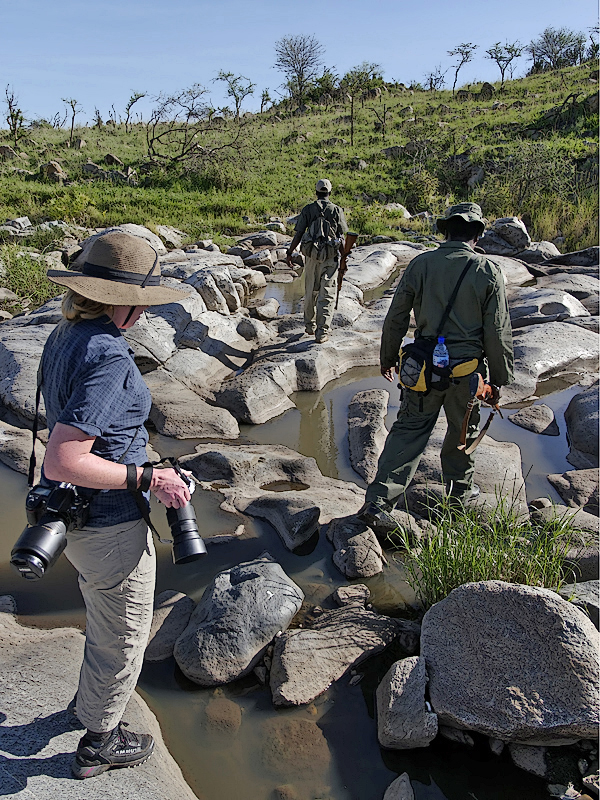
...miles of grassland with sparse acacia forest:
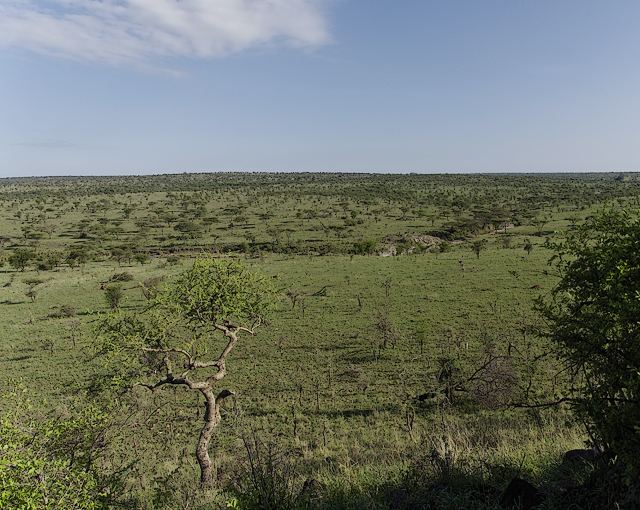
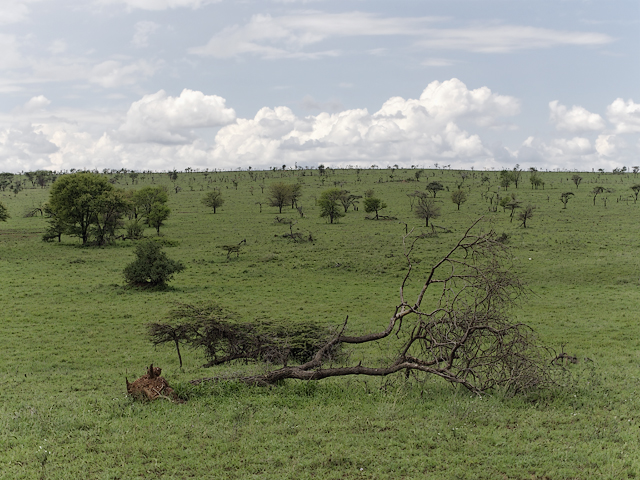
...long, sloping grassy hills (acacia forest in the background):
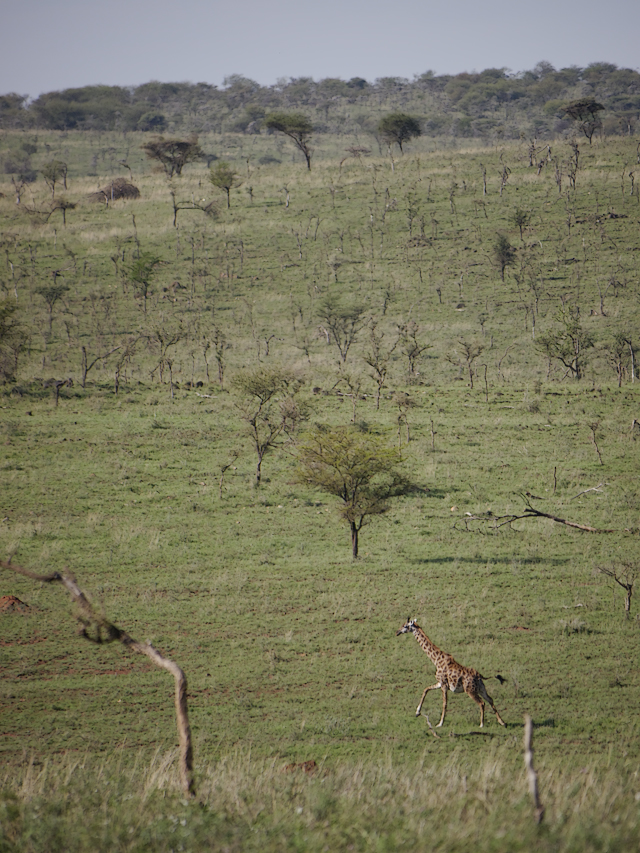
...scattered kopjes (we're on one here, plus we see one in the background):
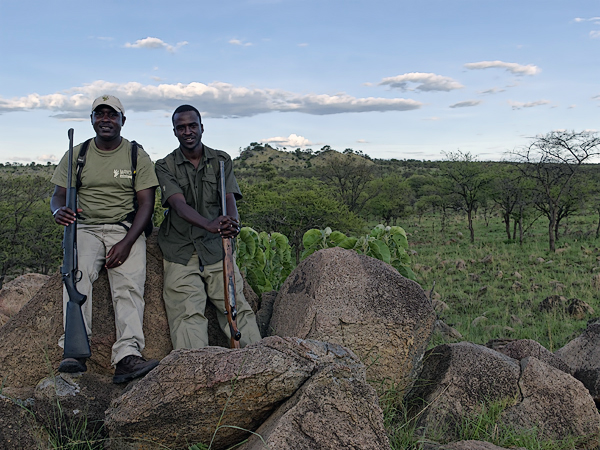
...the top of a kopje:
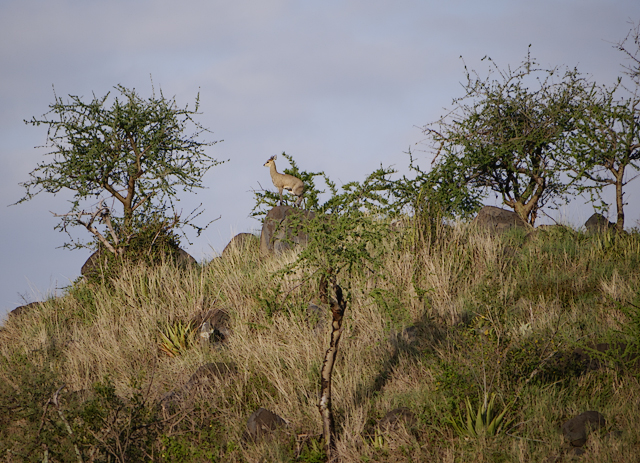
...and just mixed, here with kopje in the background, grass & brush, very rocky, with scattered acacia:
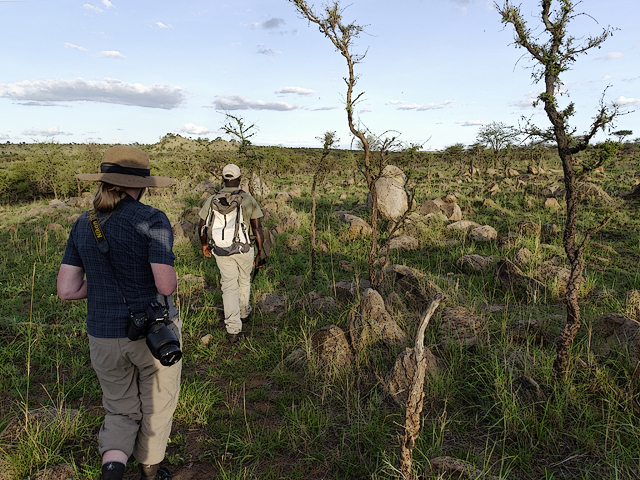
How was the walking safari led? Who were the guides?
Also mentioned previously, we had our Wayo guide and a Serengeti National Park ranger. In addition, we had a new-hire guide to Wayo, in training, plus two Wayo staff members that ran the camp (food, hot water, etc).
From left to right: Prim (Wayo guide), Frau A, Mark (Wayo guide in training), and Daniel (park ranger):
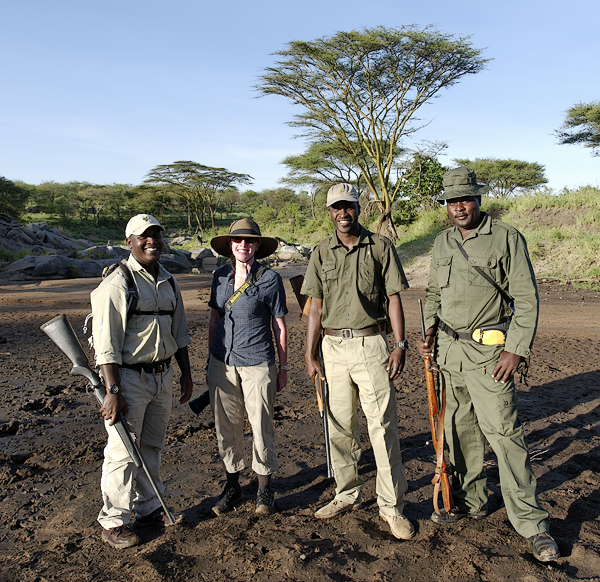
One of the Wayo guides (usually Prim) would lead, followed by Frau A and myself, with Daniel (the park ranger) in the rear. Mark would sometimes lead, and any of them would narrate to show/explain something on the way.
They did a fantastic job. Friendly, knowledgeable, and were the best animal spotters! THANKS GUYS!!!
What was the camping experience like?
The camp itself goes by different descriptions - "light", "mobile", "tented", "green"... but the main concept is that it is NOT a permanent camping area like the formal Serengeti National Park sites. The equipment fits on a small trailer so it can be brought in behind a Land Cruiser. It is set up, used, and then taken down after just a few days. The idea is that when people leave, they did not leave any trace.
Our sleeping tent and bathroom tent layout looked like this, under a tree near a tiny kopje:
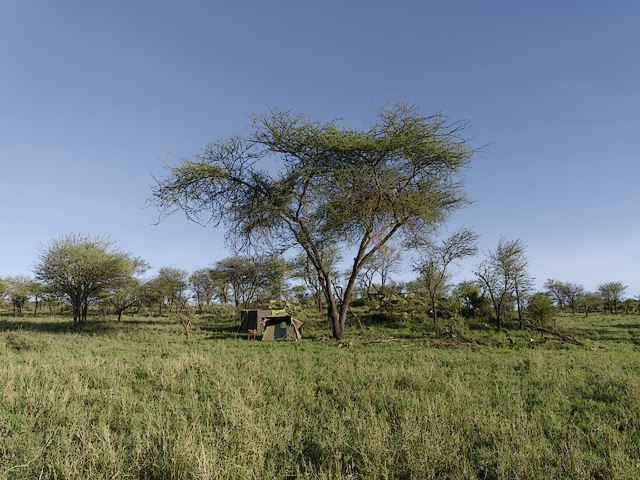
The bathroom's just meters away... but interesting in the dark, when you'd earlier heard leopards roaring:
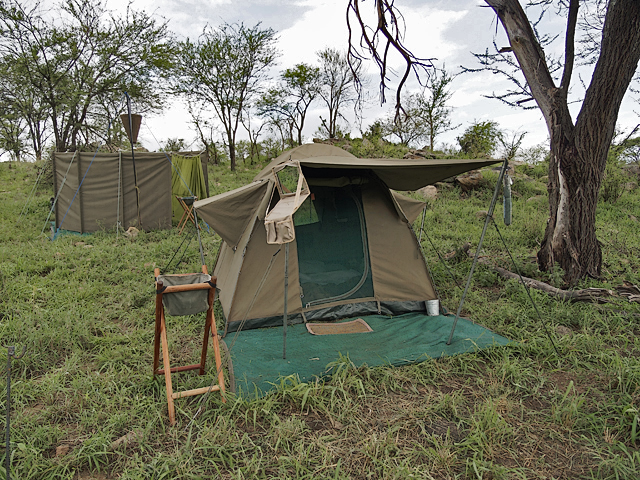
Wayo describes the sleeping tent on this page, saying:
"Tents are 3-man dome style tents that are easy to set-up with plenty of floor space for two people. You are not going to do the Macarena in it but it is great for a good nights rest in a really remote area. Sleeping is on comfy 4-inch mattresses on the ground and the bedding is cotton covered duvets and cotton sheets."
Here is our sleeping tent -- and, actually, it was quite comfortable (we slept very well each night):
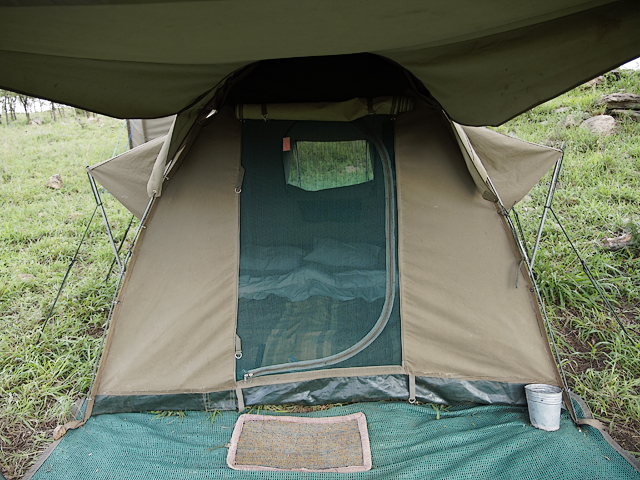
You can see the staff setting up a tent in one of their videos:
Wayo describs the bathroom facilities on this page, saying:
"The old traditional lightweight camp toilets meant you had to be an acrobat of sorts just to use the bathroom. We have decided to move away from the old style zip up, claustrophobic non-aired toiled cubicle to a non-closed enclosure approach, using nice wooden toilet seats etc. Sure, if it rains in this arid region of Africa, you might have a wet toilet seat for a bit or a shower in the rain but hey, there are worse things in the world.
Toilets are shallow pit latrines; a hole about 12m deep is dug and once all is in the hole you just sprinkle soil over top. With the open toilet tent these toilets never smell and the soil acts as both an absorber and a visual barrier.
Showers are the same type spiral tents. The water is always hot and you will have plenty for a nice shower to get cleaned and refeshed after a day's safari.
These showers and toilets have proven to work a whole lot better than anything we've used in the past."
Our open bathroom looked like this:
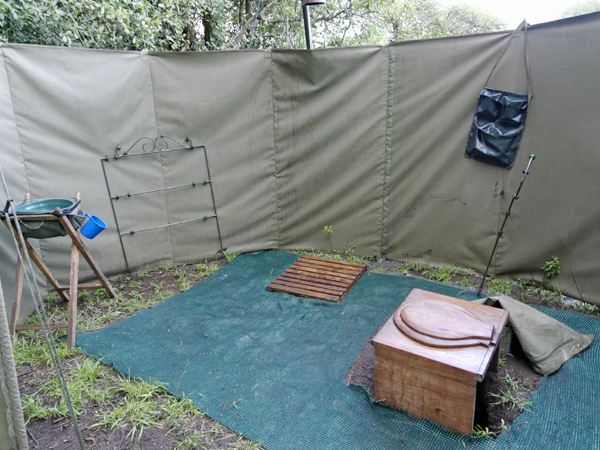
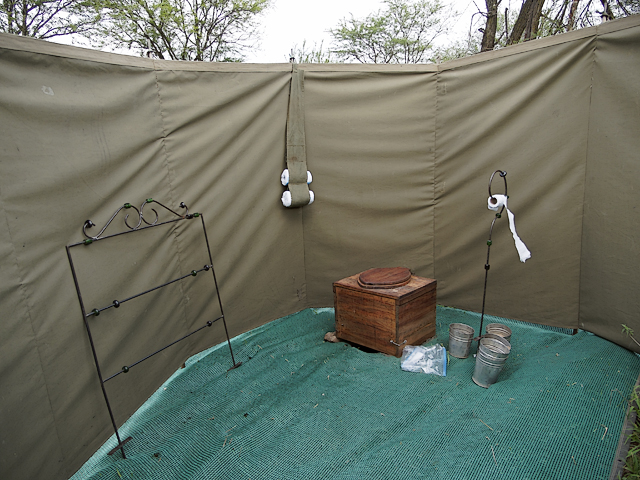
The main drawback -- toilet paper got soaked during rains. We brought it inside our tent instead.
In this next view, looking out from the bathroom, you can see the shower, the two Land Cruisers, and the guides' tents (background, left side). The guides were close enough for safety, far enough away for privacy.
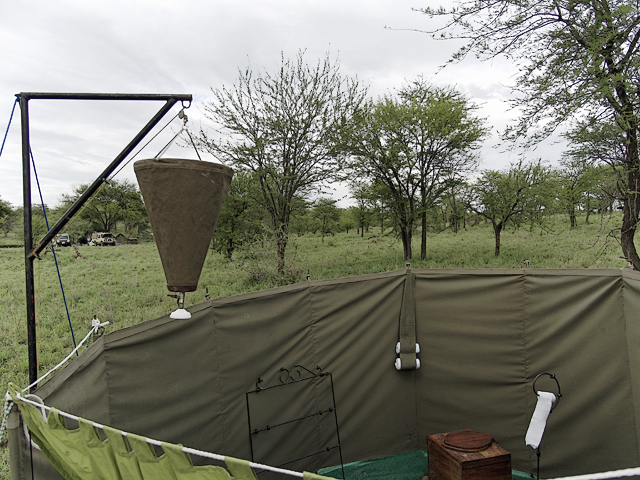
Everything was very well put together, comfortable, and even during hard evening rains we stayed dry.
Looks pretty normal so far. But don't forget this was truly the Serengeti wilderness.
How close did animals come? This small wildebeest herd was just across the river on evening (!):

At night, we clearly heard leopards roar, hyenas barking, and occasionally a small something walking by!
The dining tent was set on the edge of the river, a ways (30m?) away from our sleeping and bathroom tents:
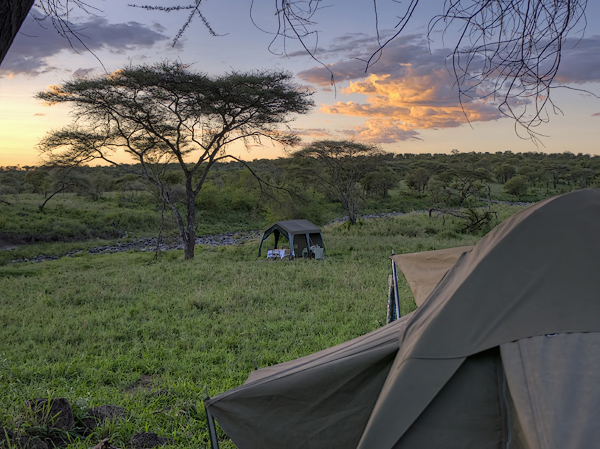
The overall camp basically formed a triangle, between our tents, the dinign tent, and the guides' tents:
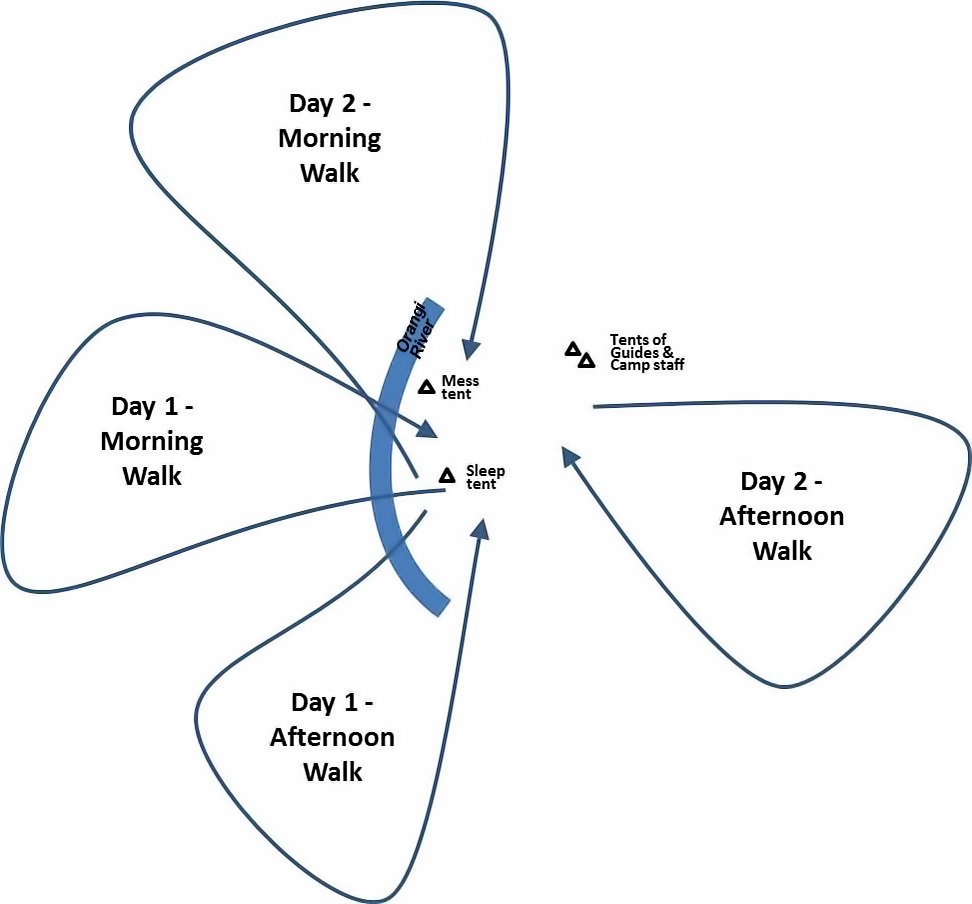
Here's our video panning briefly across the field, so you get a sense for the how everything comes together:
It was nice that the dining/mess tent was set apart a bit - meals and relaxing time felt more secluded.

There was a dining table in the tent, plus a second smaller table for setting water, dishes, etc:
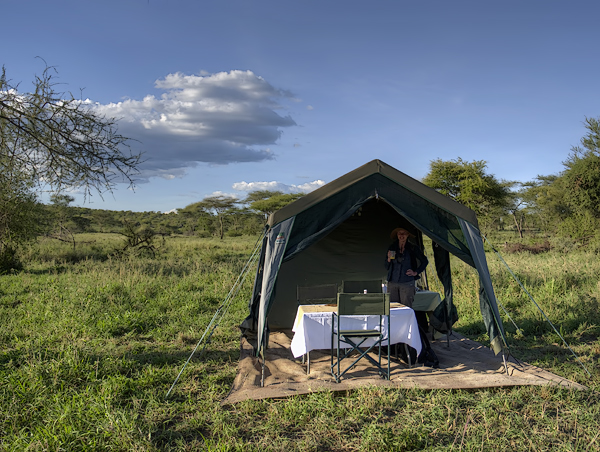
The evening fire was lit near the dining tent. A perfect way to relax with a beer as the sun set:


The view from the dining tent was nice too, seeing the Orangi River (even though it is low in December):
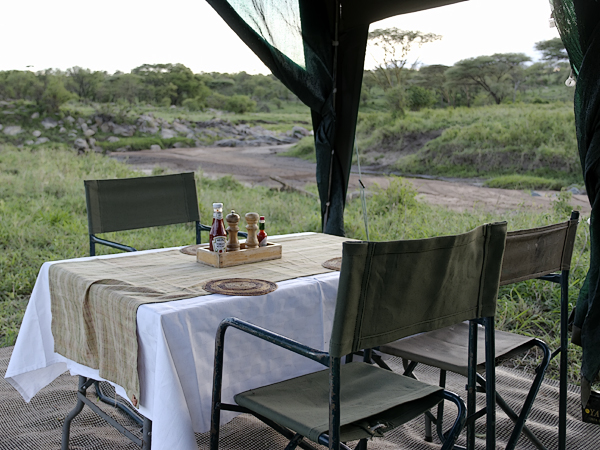
Finally, a "light painting" photo of the dining tent, just before we went to sleep one evening. Lovely:
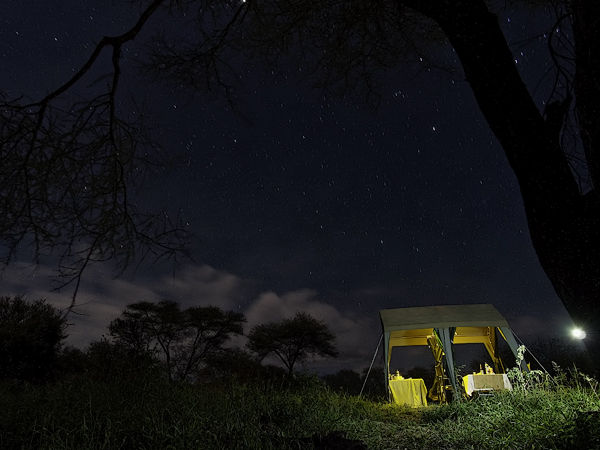
Would you recommend it? Would you do it again?
Understanding that this is NOT the best way to see big animals up close... absolutely YES.
The wilderness camping and walking safari experience were just what we had hoped: not completely "roughing it", but definitely an intimate way to see the Serengeti, with minimal environmental impact.
We were really pleased with our tour companies, so we'll mention them here:
- Natural High Safaris coordinated the whole trip (except flights from & to Munich).
- Wayo Africa is the local company that provides on-the-ground services, with whom Natural High works
As you can see by the photos and blog posts, we loved our trip and want to do it again.




